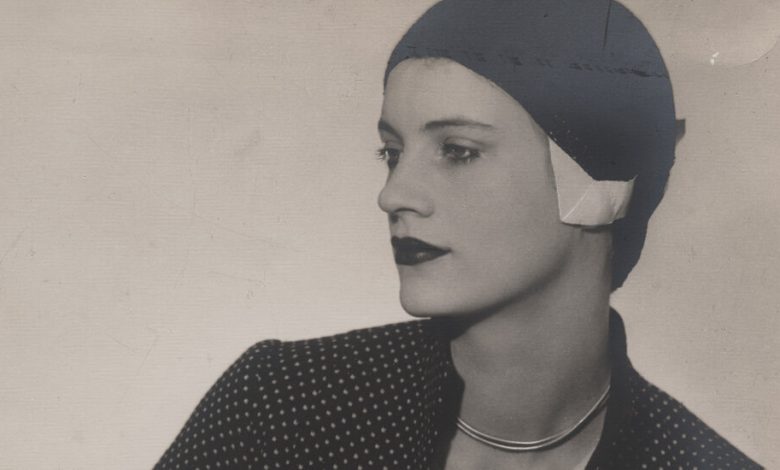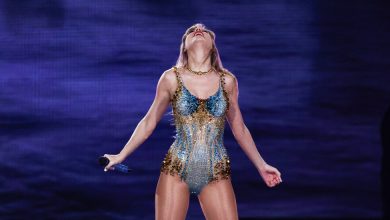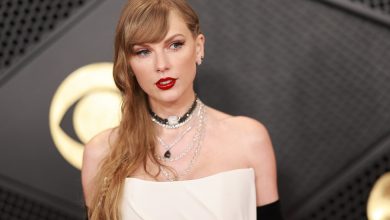Basking in the Sunshine With Picasso and Friends Before the Deluge

With as many avatars as a Hindu god, Lee Miller appeared in her lifetime as a gorgeous fashion model, daring war photojournalist, and Man Ray’s photographic assistant and lover. “Seeing Is Believing: Lee Miller and Friends,” an exhibition at Gagosian in Manhattan through Dec. 22, explores an overlooked aspect of this intriguing woman, as the longtime wife of Roland Penrose, the English Surrealist painter, scholar and collector.
Drawn largely from the Penrose family’s holdings at their farmhouse in East Sussex, England, where Miller lived from 1949 until her death in 1977, the show downplays the photographs Miller made alongside Man Ray in Paris in the 30s, as well as the fascinating Surrealist-tinged landscapes she captured in Egypt later in that decade when she was married to her first husband, the wealthy businessman Aziz Eloui Bey. And except for two prints, it omits her most consequential work: the harrowing World War II photographs she took as a correspondent for Vogue, particularly of bombed-out buildings in London and the revenge killings, suicides, concentration camp corpses and other horrors in Germany in the aftermath of defeat.
Explaining his focus, Jason Ysenburg, who organized the show with Richard Calvocoressi, an art historian, said, “I thought the relationship with Roland Penrose was a very interesting one, and a lot of people didn’t know about it.” Amusing and gregarious, Miller also interacted with a broad network of artists, including Pablo Picasso, Henry Moore, Joseph Cornell and Dora Maar, all of whom appear in the exhibition.
“She wasn’t really a muse or a patron, but she did bring these people together,” Ysenburg said. “I admire her for the way she got things done and for what she achieved.” However, it can be argued that it’s a little premature to focus on Miller’s personal accomplishments. Unlike Picasso and Man Ray, she awaits wider recognition for her artistry.
Photos that Miller and Penrose took with their friends and then pasted into scrapbooks are featured in the book and the exhibition. Most evocative are those made in the summer of 1937. Having just begun their romance, the couple vacationed in the South of France with Picasso and Maar, his lover at the time, and Man Ray and Adrienne Fidelin, his first serious girlfriend after the breakup with Miller. Ominous clouds of war were gathering on the horizon, and it feels like they are basking in the last sunshine before the deluge. Picasso was close to both Penrose, who would later write his biography, and Miller. For reasons known only to him, in the six portraits of Miller that he painted, he chose to color her blond hair green. Penrose bought one of the paintings, still owned by the family and included in the exhibition.
In her youth, Miller was so beautiful and charismatic that her artistic talent could easily be overlooked. Once she was older, drinking too much and often depressed, she avoided all discussion of her achievements as a photographer. As evidenced by Whitney Scharer’s “The Age of Light,” a widely reviewed fictionalized treatment of her life published in 2019, she is firstly remembered even today as the consort of Man Ray, a romantic relationship that lasted only three years.
That may be changing. A new movie, “Lee,” which was screened this year at the Toronto Film Festival, stars Kate Winslet, who also co-produced. Based on “The Lives of Lee Miller,” a biography written by Miller’s son, Antony Penrose, the film more fully explores Miller’s career as a wartime photographer. It testifies to the growing interest, in the nearly half century since her death, in her convention-defying photography. “If she saw a frontier, she wanted to be on the other side of it, whether it was the frontier in Germany or the exclusion of women photojournalists,” Antony Penrose said in an interview last month.
His appreciation of his mother came late. As a child and young man, he could only see her difficulties. “The slightest provocation would cause her to throw a scene and embarrass everyone, fully realizing she was alienating herself from the people whose affection she craved,” he wrote in “The Lives of Lee Miller.”
Only after she died did Antony acquaint himself with Miller’s war reportage. His wife, Suzanna Penrose, found in the attic a dispatch Miller sent from the battle of Saint-Malo in 1944. “At first, I couldn’t believe she had written it,” he recalled. “Then Roland went and pulled out the copy of Vogue with her byline on it. In that moment I suddenly realized that I had gotten her wrong. I had thought of her as a useless drunk and hysterical figure.She was in fact a very accomplished and courageous woman.”
Researching the biography, which was published in 1985, led him to another startling discovery. In Los Angeles he interviewed his mother’s younger brother, Erik, who excused himself at one point to consult with his wife. On his return, he said, “There is something we think you should know.” When she was 7, he told his nephew, Miller was raped by a babysitter and infected with gonorrhea. Before antibiotics, treatment for the venereal disease was clumsy, intrusive and only partially successful. Miller kept the secret throughout her life, not even telling Roland.
“Now I could understand why it was so difficult for her to allow herself to be in a loving relationship,” Antony said.
In her later years, Miller turned away from professional photography and embraced cooking. Studying at the Cordon Bleu and elaborately entertaining guests at her farmhouse, Farleys, she also published some of her recipes in Vogue. When she used her camera, it was mainly to portray visitors: Picasso dandling Antony on his knee or the Museum of Modern Art director Alfred Barr Jr. feeding the hogs.
Although her decline is usually attributed to the hideous sights she witnessed in Germany, her sexual violation may have been at the root of it, according to her son. “We all know now that a trauma, particularly a childhood one, never goes away,” Penrose remarked. “All that happens is it gets repressed and frozen.”
Further exploring his parents’ relationship (Roland died in 1984), Penrose has just compiled and published a heavily illustrated book of their correspondence, “Love Letters: Bound in Gold Handcuffs.” (The title alludes to a set of handcuffs by Cartier that Roland gave to Lee during their courtship.) Although reading the love letters of other people can be as stultifying as listening to them recount their dreams, the volume also offers a generous sampling of Miller’s photographs, including her underappreciated Egyptian landscapes.
Both “Seeing Is Believing” and “Love Letters” present the private side of Miller. The exhibition, in particular, amplifies the later life of a figure far better known for her glamorous youth: the launching of her modeling career when, incredibly, a passer-by who saved her from being hit by a car on a Manhattan street turned out to be the fashion magazine magnate Condé Nast; flicking on a light for a few seconds in Man Ray’s darkroom in Paris because a mouse ran over her foot and accidentally introducing her mentor to the highlighting effect known as solarization; and taking a bath in Hitler’s Munich apartment in April 1945 once American troops occupied the city.
But is Miller’s reputation really enhanced by regarding her as a wife, muse and friend of the famous? Sometimes the challenge when considering an artist is appreciating the work unclouded by personal myths: van Gogh without the mutilated ear, Pollock without the drunken fatal car crash. After visiting the exhibition, seeing the movie and reading the love letters, you should go back to the photographs, which constitute the achievement for which Miller is deservedly best remembered.
“Seeing Is Believing: Lee Miller and Friends”
Through Dec. 22, Gagosian, 976 Madison Avenue, Manhattan; 212 744-2313; Gagosian.com.



